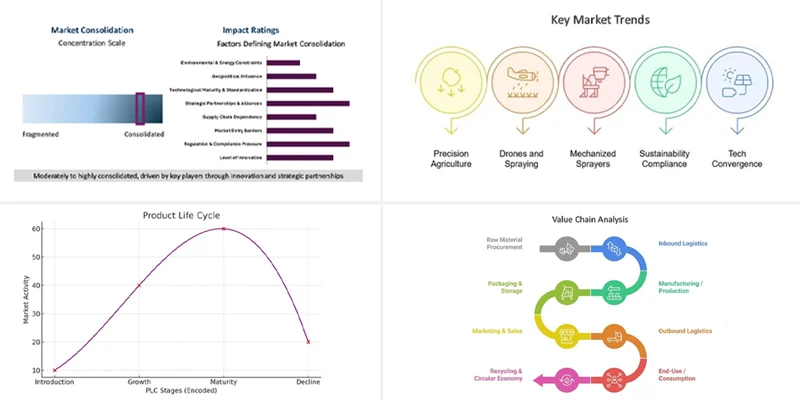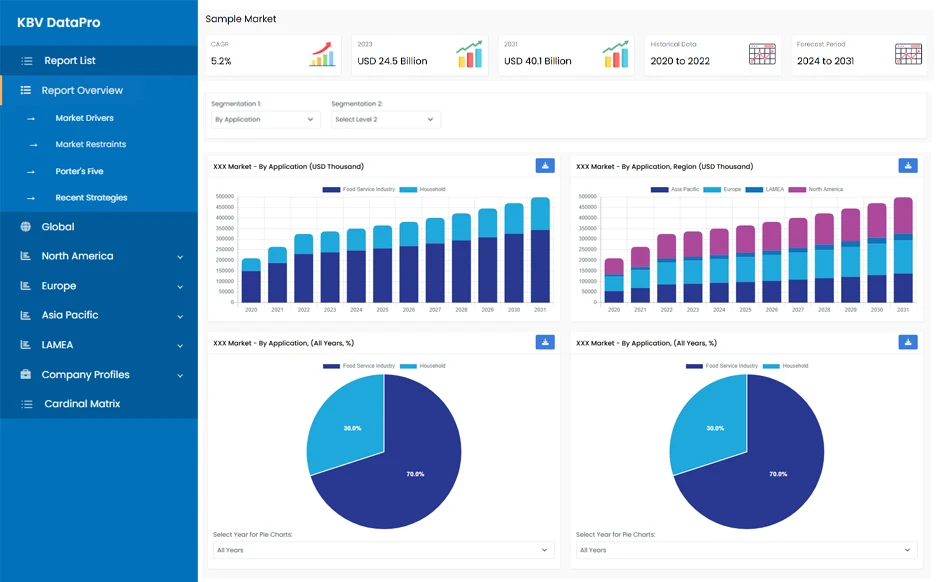“Global Vertical Farming Market to reach a market value of USD 27.10 Billion by 2031 growing at a CAGR of 19.6%”
The Global Vertical Farming Market size is expected to reach $27.10 billion by 2031, rising at a market growth of 19.6% CAGR during the forecast period.
Aeroponics is an advanced soilless cultivation technique that involves misting plant roots with nutrient-rich solutions, providing optimal oxygenation and nutrient absorption. This method is gaining traction due to its ability to enhance crop yield using minimal water and resources. The increasing adoption of aeroponic systems in urban farming projects and commercial vertical farms has contributed to the segment’s growth. Thus, the aeroponics segment recorded 21% revenue share in the market in 2023. Additionally, advancements in automation and smart farming technologies have improved the efficiency of aeroponics, making it an attractive solution for high-value crops.

The need for sustainable agricultural practices has intensified due to rapid population growth, environmental degradation, and the depletion of natural resources. Traditional farming methods contribute to deforestation, excessive water consumption, and soil degradation, making them less sustainable in the long run. This shift is not only driving market expansion but also encouraging technological advancements in the sector, making vertical farming a critical component of the future of agriculture.
Moreover, Rapid urbanization is leading to an increased demand for fresh, locally sourced food. With over half of the world’s population residing in urban areas, traditional farming struggles to meet the nutritional needs of growing city populations. The transportation of food from rural farms to urban centers contributes to high logistical costs, food spoilage, and significant carbon emissions. Retailers and food businesses are capitalizing on this trend by investing in vertical farming solutions, further fuelling the market’s expansion.
However, one of the primary barriers to the widespread adoption of vertical farming is the significant capital investment required for setting up infrastructure. Unlike traditional farming, which relies on open fields and natural sunlight, vertical farms require climate-controlled environments, artificial lighting, automated irrigation systems, and advanced monitoring technologies. The cost of constructing and maintaining these facilities is often prohibitively high, making it difficult for small-scale farmers and startups to enter the market. However, widespread affordability remains a key challenge that must be addressed for the market to achieve mass adoption.


Based on category, the market is segmented into fruits vegetables, & herbs, flowers & ornamentals, and others. The fruits vegetables, & herbs segment procured 69% revenue share in the market in 2023. This is driven by the increasing consumer preference for fresh, pesticide-free, and locally grown produce. The adoption of vertical farming for crops such as leafy greens, tomatoes, strawberries, and herbs has surged due to its ability to provide year-round cultivation, maximize space efficiency, and reduce water usage.

Based on offering, the market is characterized into hardware, software, and services. The software segment held 24% revenue share in the market in 2023. This is driven by the increasing adoption of digital solutions for farm monitoring, automation, and data-driven decision-making. Advanced software platforms integrated with artificial intelligence (AI), machine learning (ML), and the Internet of Things (IoT) have enhanced efficiency by optimizing resource usage, monitoring environmental conditions, and predicting crop yields.
The hardware segment is further subdivided into lighting, hydroponic components, and sensors. The lighting segment procured 42% revenue share in the market in 2023. Artificial lighting, particularly LED grow lights, is critical in vertical farming as it facilitates photosynthesis and ensures optimal plant growth in indoor settings.
On the basis of mechanism, the market is classified into hydroponics, aeroponics, and aquaponics. The hydroponics segment acquired 65% revenue share in the market in 2023. Hydroponics is a widely adopted growth mechanism that allows plants to thrive in a nutrient-rich water solution without needing soil. The popularity of hydroponics in vertical farming is driven by its efficiency in resource utilization, particularly water and space.
By structure, the market is divided into building-based and shipping container-based. The shipping container-based segment garnered 54% revenue share in the market in 2023. This structure has gained popularity due to its modular and scalable nature, making it ideal for urban settings and remote locations where traditional farming is not feasible. Shipping container farms utilize hydroponic or aeroponic systems within climate-controlled containers, allowing year-round cultivation with minimal water and energy usage.
Free Valuable Insights: Global Vertical Farming Market size to reach USD 27.10 Billion by 2031
Region-wise, the market is analyzed across North America, Europe, Asia Pacific, and LAMEA. The North America segment recorded 32% revenue share in the market in 2023. The region’s dominance can be attributed to the rapid adoption of advanced agricultural technologies, increasing urbanization, and a strong focus on sustainability. The United States and Canada have witnessed significant investments in vertical farming infrastructure, with major companies and startups pioneering innovative solutions to enhance crop yield and resource efficiency.
| Report Attribute | Details |
|---|---|
| Market size value in 2023 | USD 6.56 Billion |
| Market size forecast in 2031 | USD 27.10 Billion |
| Base Year | 2023 |
| Historical Period | 2020 to 2022 |
| Forecast Period | 2024 to 2031 |
| Revenue Growth Rate | CAGR of 19.6% from 2024 to 2031 |
| Number of Pages | 275 |
| Number of Tables | 520 |
| Report coverage | Market Trends, Revenue Estimation and Forecast, Segmentation Analysis, Regional and Country Breakdown, Porter’s 5 Forces Analysis, Company Profiling, Companies Strategic Developments, SWOT Analysis, Winning Imperatives |
| Segments covered | Component, Category, Mechanism, Structure, Region |
| Country scope |
|
| Companies Included | AeroFarms, LLC, American Hydroponics, BrightFarms, Inc. (Cox Enterprises Inc.), Plenty Foods Pty Ltd. (Josh Gadischke), Bowery Farming, Inc., Eden Green Technology, Lindsay Corporation, Hunter Industries, Inc., The Toro Company and Valmont Industries, Inc. |
By Component
By Category
By Mechanism
By Structure
By Geography
This Market size is expected to reach $27.10 billion by 2031.
Increasing Global Demand for Sustainable Agriculture are driving the Market in coming years, however, High Initial Capital Investment and Operational Costs restraints the growth of the Market.
AeroFarms, LLC, American Hydroponics, BrightFarms, Inc. (Cox Enterprises Inc.), Plenty Foods Pty Ltd. (Josh Gadischke), Bowery Farming, Inc., Eden Green Technology, Lindsay Corporation, Hunter Industries, Inc., The Toro Company and Valmont Industries, Inc.
The expected CAGR of this Market is 19.6% from 2023 to 2031.
The Hardware segment is leading the Market by Component in 2023; thereby, achieving a market value of $16.6 billion by 2031.
The Europe region dominated the Market by Region in 2023, and would continue to be a dominant market till 2031; thereby, achieving a market value of $9.2 billion by 2031.
Our team of dedicated experts can provide you with attractive expansion opportunities for your business.

 Drivers
Drivers
 Restraints
Restraints
 Opportunities
Opportunities
 Challenges
Challenges
